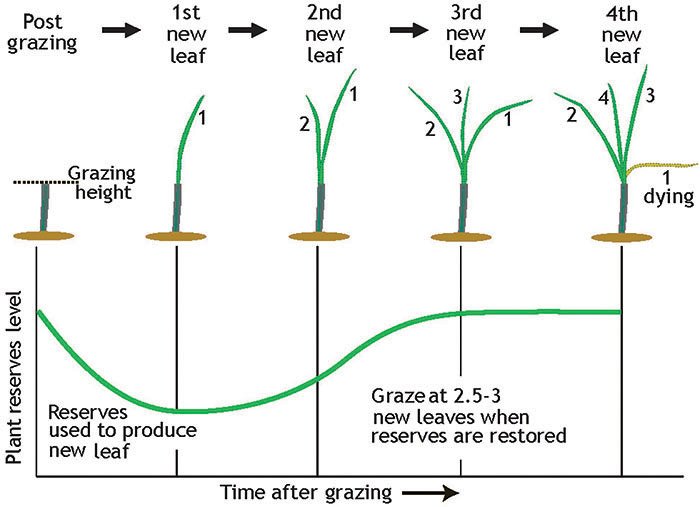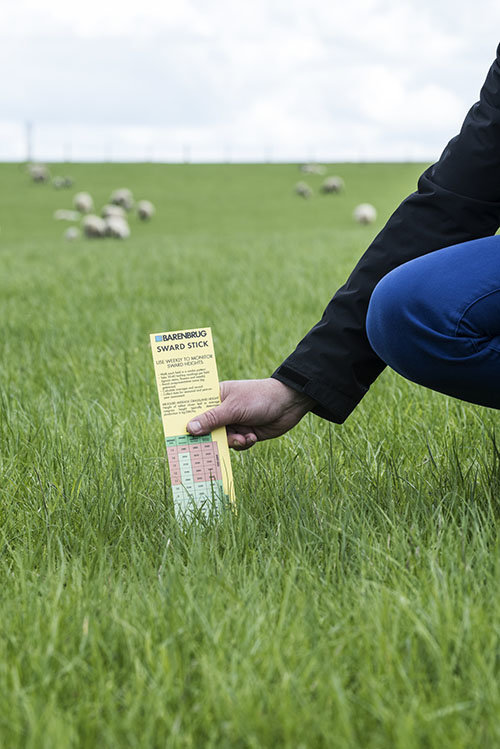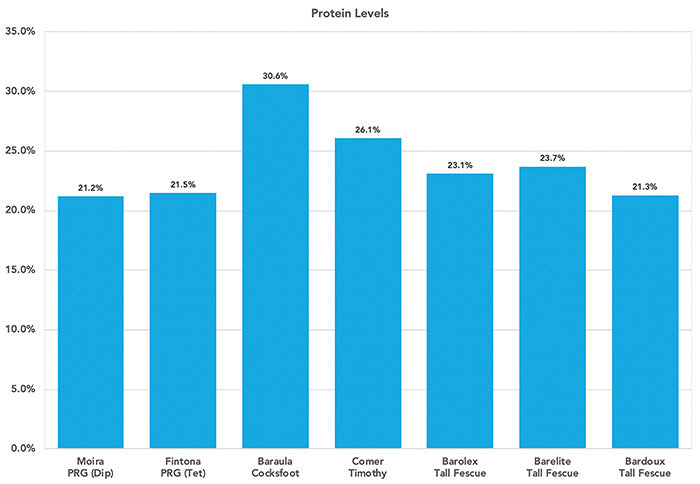Protein Focus
Protein is an important part of the diet for all grazing animals

Protein is an important part of the diet for all grazing animals
Protein is an important part of the diet for all grazing animals and is made up of amino acids, both essential and non-essential. Ruminant animals have the capability to obtain all the essential amino acids through food breakdown, however this can depend on the diet provided and animals will give a production response to a change or supplementation of nutrients.
Fresh grass Crude Protein (CP) levels can range from 16% to 28% and is dependent on factors such as the species present, growth stage of the grass crop, soil health and fertility and the climatic conditions.
The CP requirement varies between, sex, breed, age and stage of growth or production. Better grassland husbandry can help to supply CP for production and growth. Young, growing stock and lactating females have the higher CP requirement.
There are two types of protein to look at when formulating rations: Rumen Degradable Protein (RDP) and Digestible Undegradable Protein (DUP). Forage protein is typically high in RDP - as much as 80% - and low in DUP. RDP is broken down in the rumen easily and converted to microbial protein which then feeds the protozoan and bacterial populations in the gut. DUP passes through the rumen and is broken down in the small intestine.
Rotational grazing practises can be ideal in maximising both energy and protein levels in forages because there is a more favourable leaf to stem ratio in the sward. As a grass matures, the dry matter percentage rises, resulting in an increase of more fibrous cell wall material and a reduction in the cell content percentage which is where energy, protein and other nutritional components are found.
Below: Tiller leaf production


Above: Barenbrug’s Sward Stick is used to measure the height of grass
ORDER YOUR FREE SWARD STICK HERE!
It is well known that adding legumes to a sward can increase protein levels, palatability and grazing intakes, subsequently improving animal productivity. They also allow grassland farmers to make use of ‘fixed’ atmospheric N giving the potential to reduce artificial N fertiliser inputs.
The most popular legume in the UK is white clover which is a stoloniferous species with a prostrate, spreading growth habit and varied leaf sizes. Smaller leaf white clovers are most persistent under heavier grazing whilst larger leaf types are better for rotational grazing and silage production. Using a blend of leaf sizes ensures the sward can adapt to varied management. White clover is a perennial species and is safe for all classes of livestock.
A crop of increasing popularity is Prota Red Clover, a short to medium term species better suited to silage production due to its upright growth habit and higher yield capability.
To maximise plant persistency, red clover must be managed carefully with appropriate site selection, increased cutting heights and avoidance of overgrazing to protect the growing point of the plants. Red clover should not be grazed by, or red clover silage fed to, breeding sheep 6 weeks before tupping until 6 weeks after tupping. A mixture such as Protein Sile provides up to four years of low input high output, high protein forage.
Artemis lucerne (or Alfalfa) is another legume which is best suited to cutting can yield up to 17.5 t DM/ha in the first year and persist up to 5 years where well managed. Its deep rooted growth habit makes it a good choice for drought prone areas and can fix up to 250kg N/ha.
Barvicos common vetch is a very flexible variety which can be established in spring or autumn either simply as a green manure or as part of a mixture with grasses and or cereals for a number of applications.
Another short term high protein forage option is Prota Plus which combines the benefits of annual clovers and Italian ryegrass for a 12 – 18 month high protein crop suitable for cutting or grazing any class of livestock.

Above: Protein levels tested at Barenbrug’s Cropvale site on 20th March 2020. All species had protein levels of over 21% with cocksfoot being the highest at 30%.
Technical points:
Typically conserved forage CP can range between 10 and 20%.
Young stock need 13-15% CP in the diet, lactating cows 15-17%, depending on yield and finishing cattle need 12-16% CP. In-lamb ewes require 16 – 18% CP and sheep require 8g/day for wool production.
Adding legumes to a sward can increase protein levels, palatability, intake and enhances the diversity of swards.
Typically, white clover will fix between 100 and 150 kgN/ha/annum.
Red clover grows from a single crown and can fix over 200kg N/ha/annum.